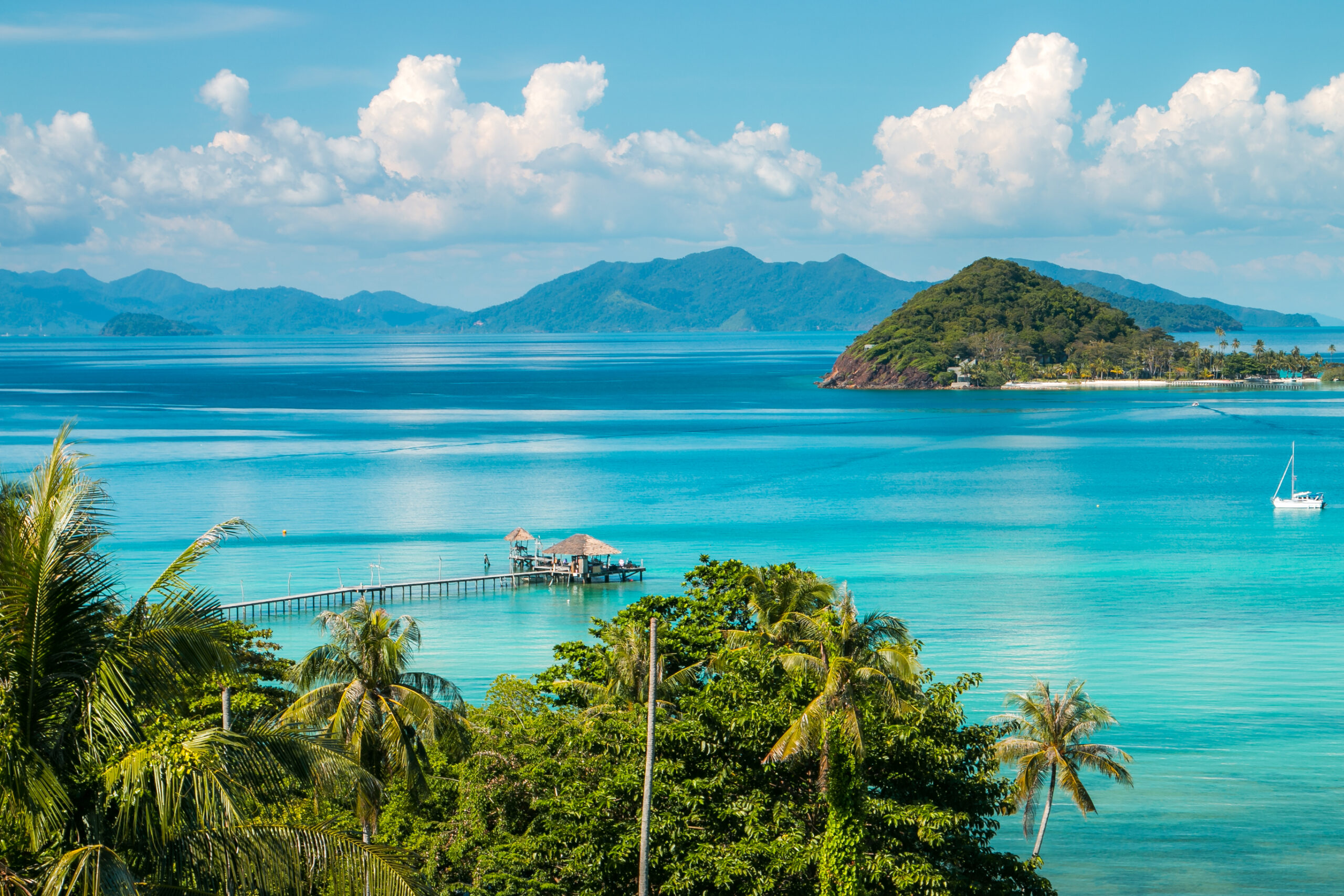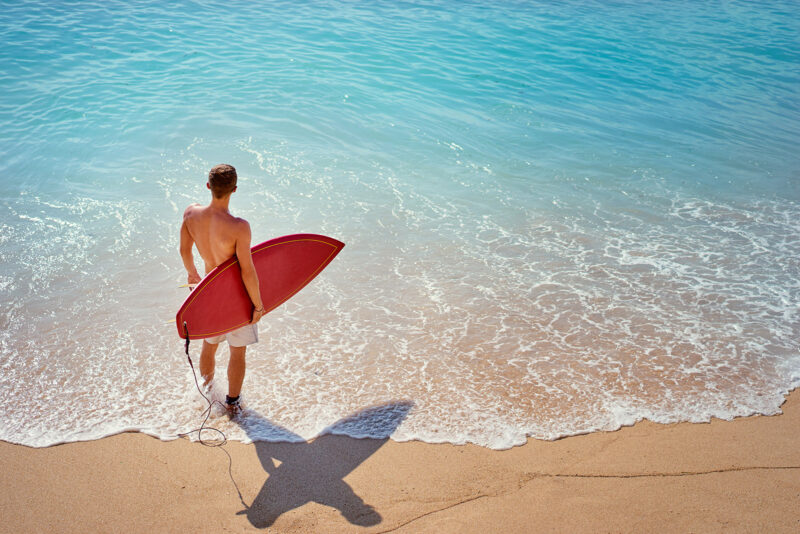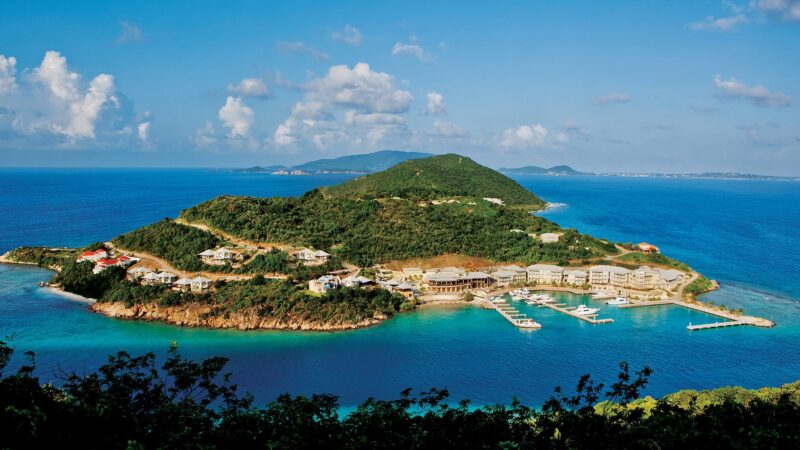I’ve been to Thailand a handful of times over the past few years and each time, I found myself almost magnetically drawn back to the islands. After a couple of months spent hopping between ferries, speedboats and longtails, I get the hype.
It’s not just the beaches (though yes, they’re incredible). It’s the rhythm of life out here: days that start with sunrise swims and end with beach BBQs, motorbike rides through jungle hills, iced coffees in ramshackle cafés and unbeatable sunsets on the regular.
Whether you’re a diving addict like me, more into laid-back luxury or just want to hit a few iconic spots and see what all the fuss is about, there’s a route here for you. Some islands are made for partying, others for floating in turquoise water doing absolutely nothing—and the best bit is how easy it is to hop between them.
If you’re thinking about island hopping in Thailand, keep reading!
Route 1: The Classic Andaman Trio
Phuket, Koh Phi Phi, Railay
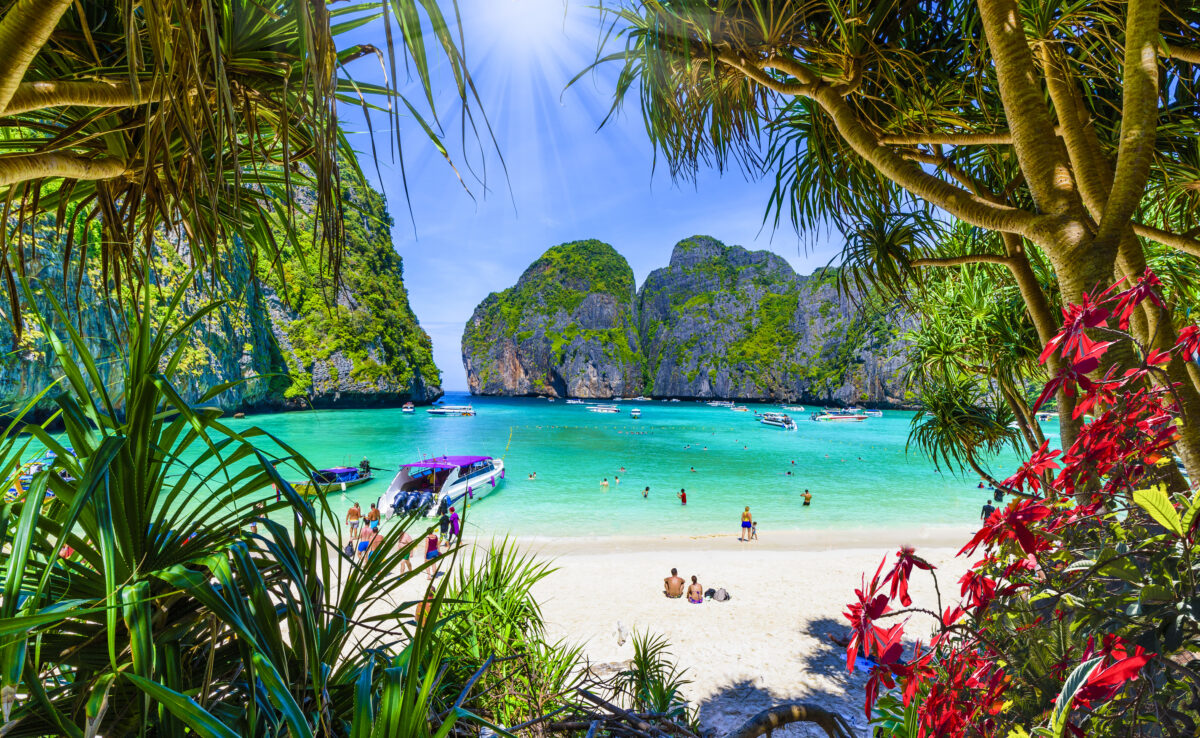
This one’s a must-do for first-timers and it’s popular for a reason. I started in Phuket (easy flight access, big beach resorts, loads of food options), then jumped over to Koh Phi Phi for that postcard-style chaos: fire shows on the beach, hike-up viewpoints, snorkelling trips and late-night buckets.
It’s busy but still has magic if you know where to look (stay in Long Beach or Ao Lo Dalam for quieter mornings).
From there, I took a short boat to Railay which is easily one of my favourite stops. Railay isn’t technically an island, but it feels like one. It’s only accessible by boat and the cliffs here are just ridiculous. Sunrise on Phra Nang Beach is a must, and if you’re into climbing, bring your shoes as this is where the pros go.
Best for: First-time visitors, beach-and-party energy, big views and buzzy nights
How long: 6 to 8 days total
Getting around: Ferries from Phuket to Phi Phi and longtail or speedboat to Railay
Route 2: The Gulf Islands Circuit
Koh Samui, Koh Phangan, Koh Tao
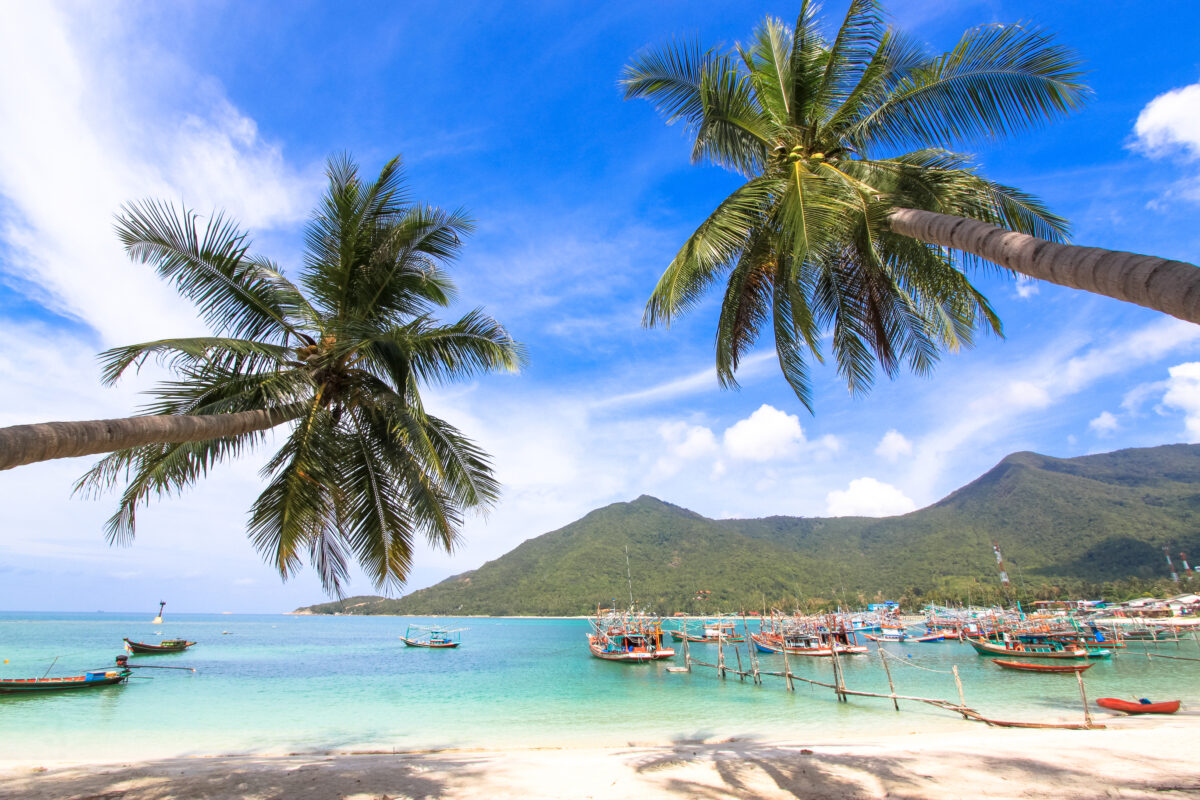
This is the east coast classic and I’ve done this one twice now. Each island has its own vibe and hopping between them is easy as ferries run all day.
Koh Samui is the biggest and fanciest with lots of resorts, wellness retreats and a (seriously cute and tiny) airport. It’s a good spot to start slow, eat some amazing Thai food and book a beach massage or three. Then you jump to Koh Phangan. While it’s famous for Full Moon parties, the north of the island is completely different. I loved it for its yoga studios, quiet jungle villas and hidden coves with barely anyone else around.
Koh Tao is where I stayed way too long without meaning to. It’s small and super walkable, with a massive diving scene and a chilled, slightly scruffy charm. If you’re into scuba, this is the one.
Best for: Scuba diving, wellness breaks, variety
How long: 8 to 10 days total
Getting around: Lomprayah or Seatran ferries between islands
Route 3: The Trang Islands
Koh Mook, Koh Kradan, Koh Ngai
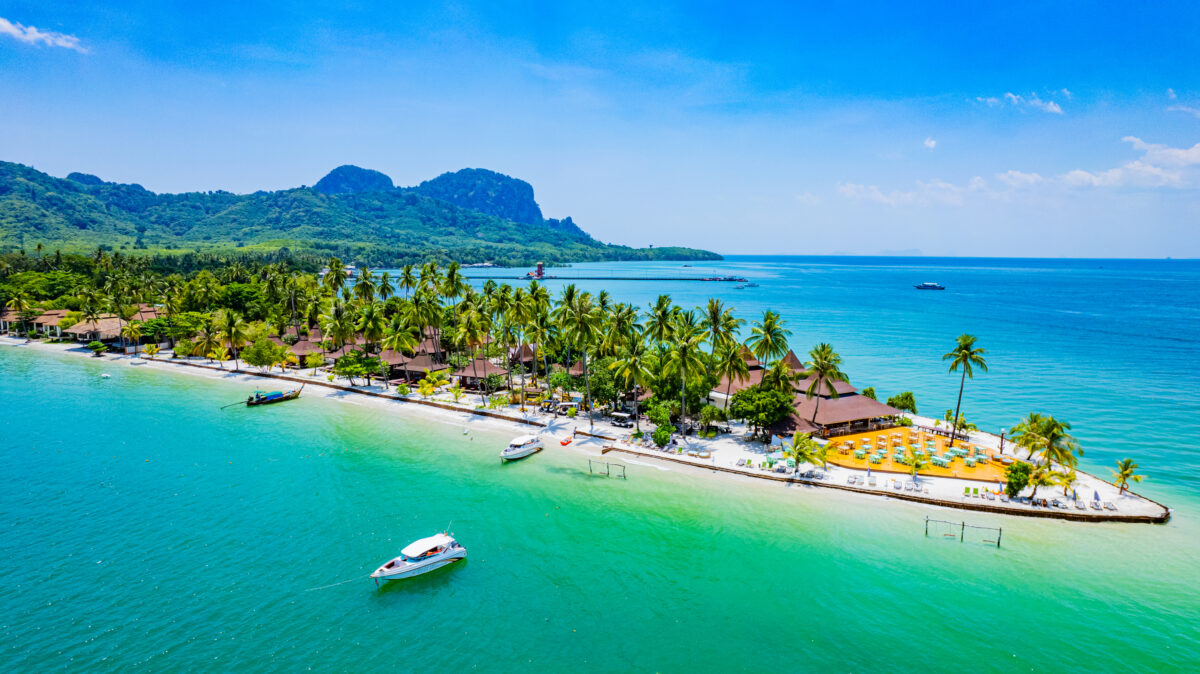
This one’s for when you want to fully check out. It’s low-key, relaxed and absolutely beautiful (and also way less developed than some of the big hitters).
I started in Koh Mook, which has this wild emerald cave (you swim through a pitch-black tunnel and pop out on a secret beach). It’s also got a sleepy village vibe and real Thai hospitality. I stayed in a bamboo bungalow five metres from the sand.
Koh Kradan is basically a long sandbar with barely any buildings. I kayaked around the whole thing in a morning and the snorkelling straight off the beach was unreal. Koh Ngai is the final stop. It’s tiny, with one walking path and perfect sunset views.
Best for: Couples, solo travellers needing a reset, off-grid beach days
How long: 5 to 7 days total
Getting around: Longtail boats between islands, ferry or speedboat from Trang or Pak Meng pier
Route 4: The Satun Archipelago
Koh Lipe, Koh Adang, Koh Bulon Lae
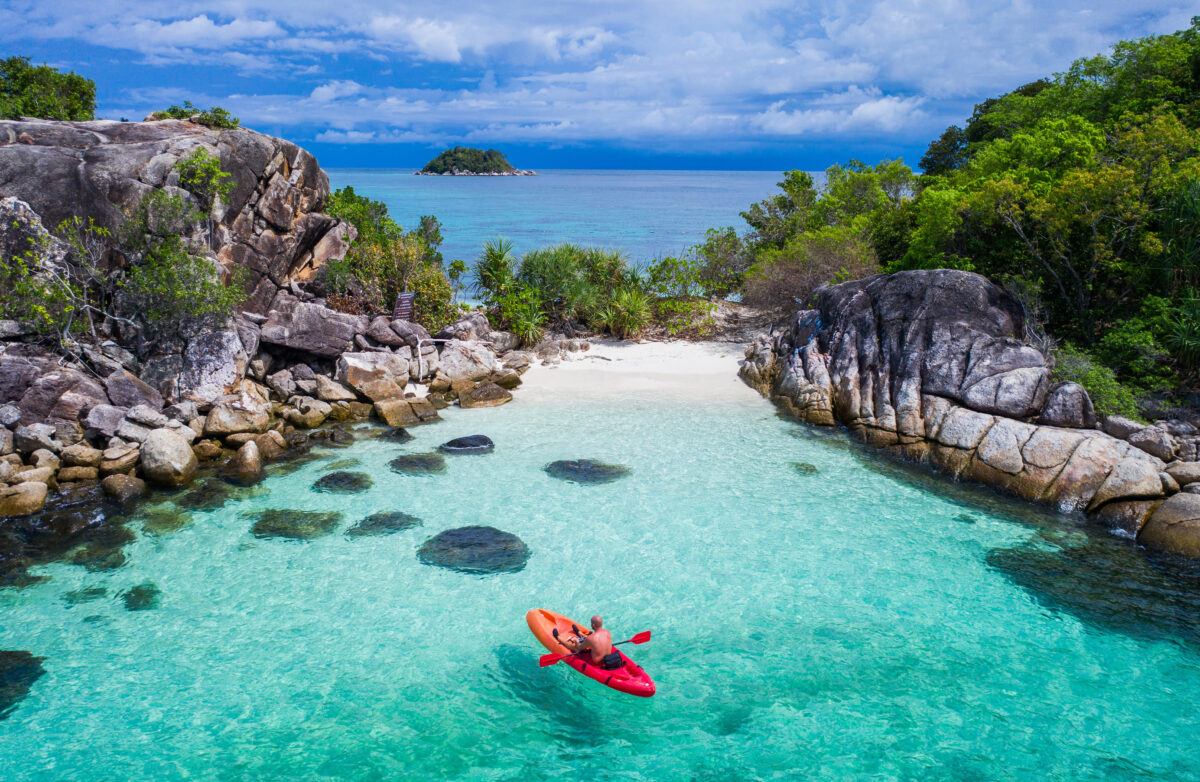
Koh Lipe is the name you might know—it’s often called the “Maldives of Thailand” and it lives up to it. The water here is next-level clear and the vibe is half backpacker hangout, half boutique resort chill. Sunrise Beach is my favourite. It’s quieter than Pattaya Beach and mornings here are a dream.
From Lipe, you can hop to Koh Adang. It’s just across the water, but completely different. It’s part of a national park, so you’ll need to bring your own snacks and water. The hike to the viewpoint is sweaty but worth it. Koh Bulon Lae is the final stop and it might be my favourite: no cars, barely any people, just long walks on the beach and the occasional monkey.
Best for: Remote escapes, underwater lovers, slow travel energy
How long: 6 to 8 days total
Getting around: Boats from Pak Bara pier (Satun), then longtails between islands
Route 5: Northern Andaman Escape
Koh Yao Yai, Koh Yao Noi, Koh Phra Thong
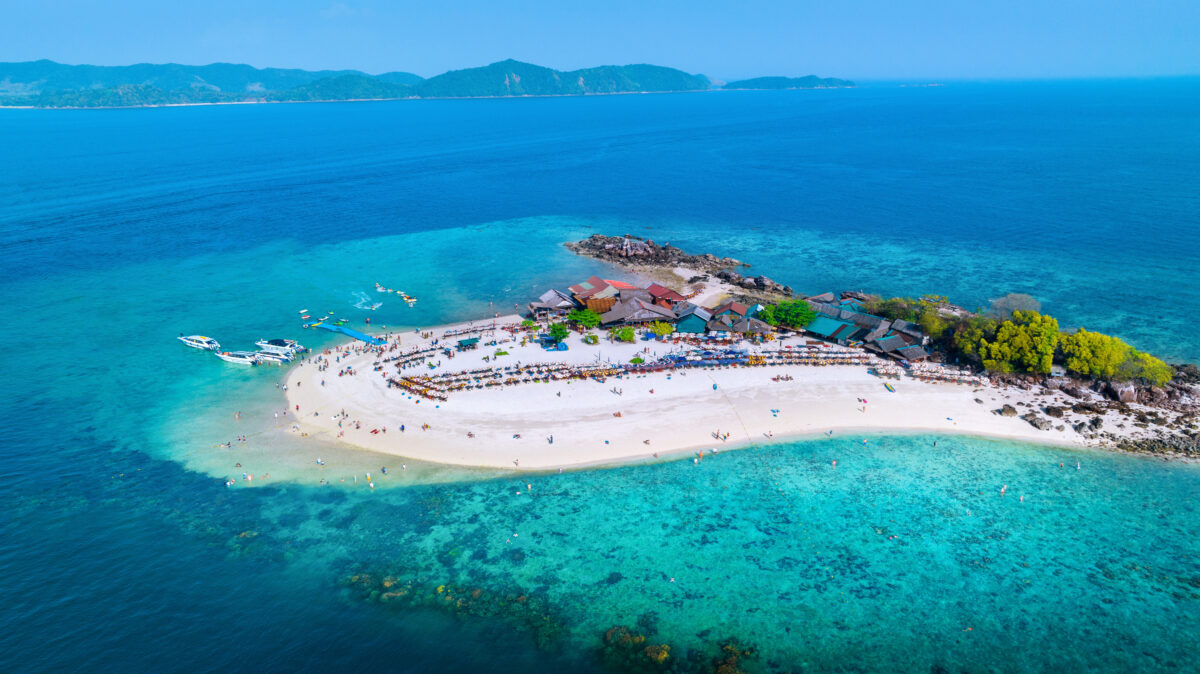
If you’re looking to skip the crowds entirely and still get those dreamy island feels, this route is one of Thailand’s most underrated. I stumbled into this part of the country on a second trip and couldn’t believe how quiet it was, especially compared to nearby Phuket.
Koh Yao Yai is bigger, a bit more rugged and still properly Thai. Life moves slowly here: it’s all about fisherman villages, local markets and dirt-bike rides through palm groves. Koh Yao Noi is its smaller sister and it’s where you’ll find boutique resorts and eco-stays tucked between jungle and sea. It’s perfect for that read-a-book-and-hear-yourself-think type of travel.
Koh Phra Thong is where things get wild. No 7-Elevens, no banks, just golden savannah (seriously), mangroves and sea turtles. It feels like stepping into another country. It’s not for everyone, but if you’re up for an adventure and don’t mind rustic accommodation, it’s magical.
Best for: Slow travellers, nature lovers, people who’ve ‘done’ Thailand before
How long: 7 to 9 days total
Getting around: Longtails or speedboats from Phuket, local transfers between islands
Route 6: East Coast Escape
Koh Samet, Koh Mak, Koh Kood
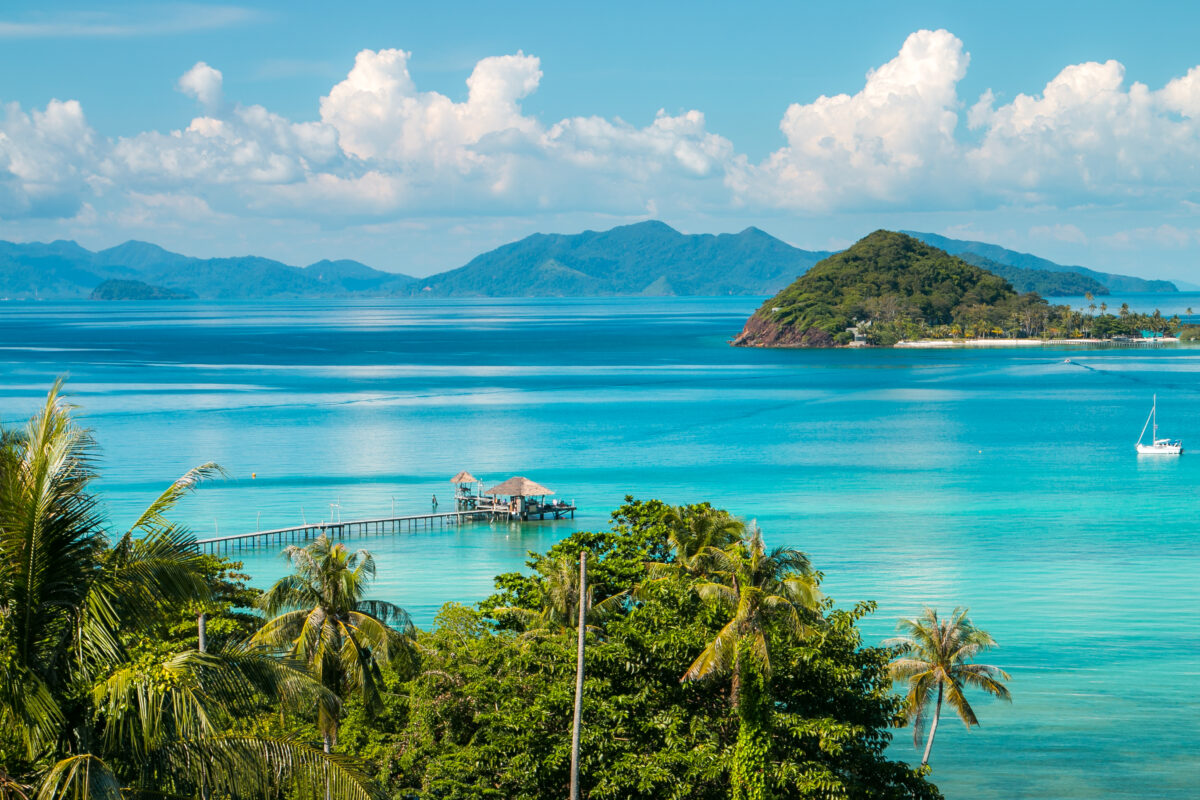
This one’s a bit of a curveball. I did it during my second trip to Thailand when I was looking for something more low-key and under the radar. It’s a great route if you’re coming from Bangkok and don’t fancy flying down south.
Start with Koh Samet, which is the easiest island to reach from the capital—just a few hours by bus and boat. It’s small but buzzing, with white-sand beaches and a slightly Thai-weekender energy. I stayed on Ao Prao, which is a bit pricier but beautifully peaceful.
From there, head east to Koh Mak, which honestly feels like Thailand in the ’90s (in the best way). It’s flat, green and super laid-back. I hired a bike to explore the rubber plantations and found quiet beaches with no one else around. It’s one of the country’s most eco-conscious islands too, which is a bonus.
End with Koh Kood, my favourite of the three. It’s a bit bigger and more dramatic, with waterfalls, jungle treks and beaches so pretty they don’t look real. The island’s still developing but hasn’t lost its charm. I think it’ll be a really popular spot in a few years so I recommend visiting before it gets too busy.
Best for: Bangkok detours, underrated beach lovers, peace without total isolation
How long: 6 to 8 days total
Getting around: Bus or minivan + boat from Bangkok to Koh Samet, then speedboats between islands
Quick Tips for Island Hopping in Thailand
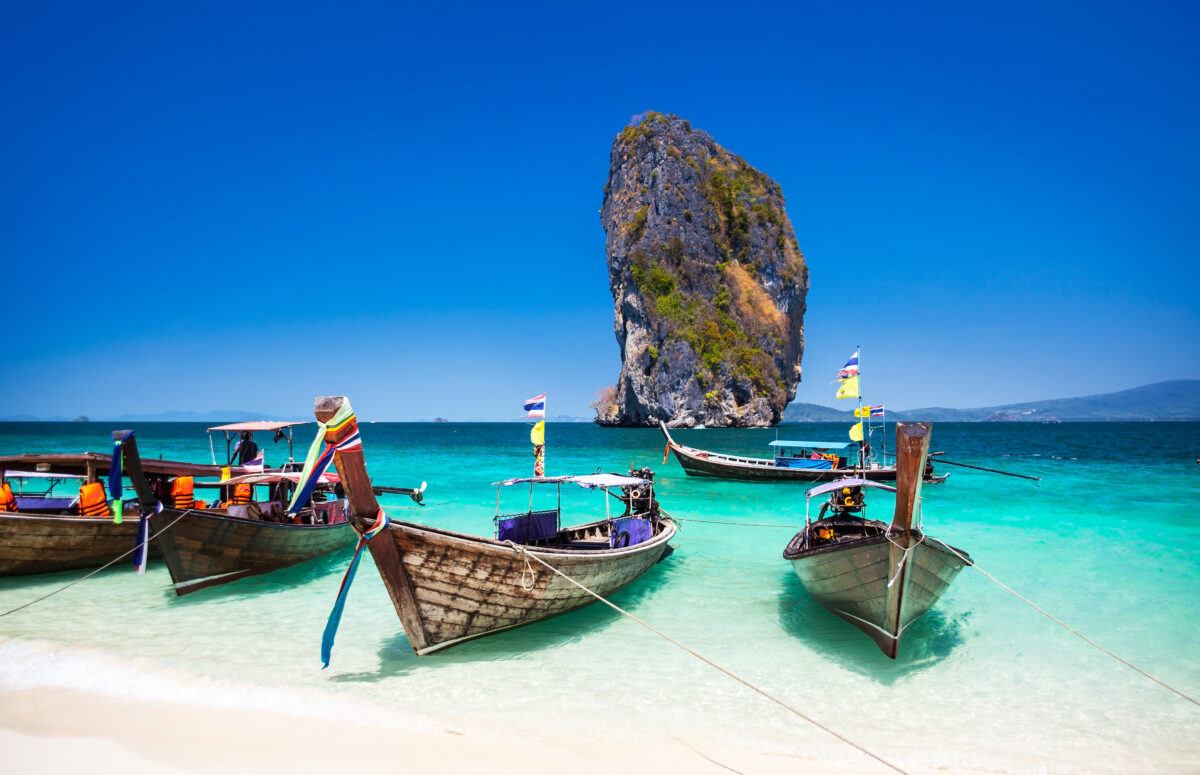
When’s the best time to go?
November to April is the peak dry season (especially on the west coast). Avoid September to October if you’re heading to the Andaman side as the rain is real.
What to pack?
You’ll be hopping on and off boats a lot, sometimes into the shallows. A small backpack or soft duffel is way easier than a wheelie suitcase. Packing light is also encouraged—often you’ll be lifting your bags from one rocky boat to another. And you don’t really need much out here other than swimwear and a few books.
How early to book?
Book ferries in advance during high season but don’t over-plan everything. Part of the fun is seeing what vibe each place gives you and adjusting on the go. Sometimes you can change your ticket if need be.
Do you need cash?
Yes. ATMs aren’t guaranteed, especially on the smaller islands. Bring cash and have a backup card just in case.
What’s the WI-FI like?
Good on the bigger islands although it can drop during stormy weather or wet season. On the more off-grid spots like Koh Adang or Koh Phra Thong, WIFI can be pretty patchy or even non-existent—ideal if you want to unplug but something to keep in mind if you have any work to do!

